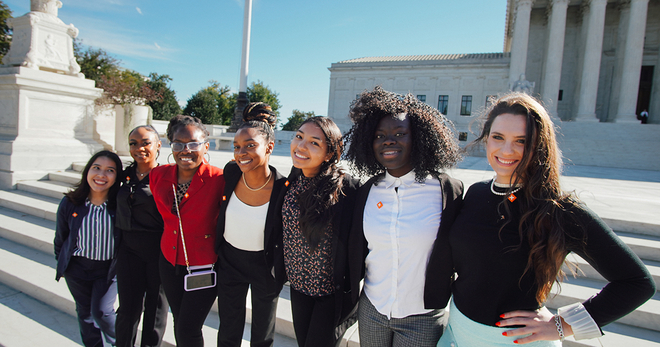New study: truth campaign effective in shifting knowledge and attitudes about vaping
A new study is the first to show that young people who had seen truth® vaping prevention campaigns were more likely to have accurate e-cigarette knowledge, believe that e-cigarettes were harmful and socially unacceptable, and hold anti-tobacco industry attitudes compared to those unaware of the campaign.
The study, published in Tobacco Control, shows that young people who had higher awareness of the campaign had nearly twice the odds of knowing certain facts about e-cigarettes – including how vaping increases the likelihood of going on to smoke cigarettes and that JUUL pods contain 20 cigarettes’ worth of nicotine.
Increasing e-cigarette-related knowledge and beliefs is an important first step in changing behaviors and reducing epidemic levels of youth vaping in the U.S. While several previous studies have shown that truth smoking prevention campaigns have contributed to major declines in youth smoking rates, there has not been evidence to date on the effectiveness of vaping prevention campaigns in addressing youth vaping. The study is the first to address this research gap.

Spreading the truth about vaping
Researchers surveyed young people between the ages of 15-24 who had seen truth videos highlighting facts about e-cigarettes. The videos delivered the facts that one JUUL pod contains 20 cigarettes’ worth of nicotine, that no one knows the long-term effects of using JUUL, and that vaping quadruples the likelihood of going on to smoke cigarettes.
They found that the higher the campaign awareness, the higher the agreement with certain facts about e-cigarettes. For example, young people who saw the videos most frequently had 2.5X higher odds of knowing about JUUL’s very high nicotine content, compared to those who hadn’t seen the video. Those with lower awareness had 1.6X higher odds of being aware of JUUL’s nicotine content. Similarly, young people with the highest campaign awareness had nearly twice (1.9X) to the odds of agreeing that e-cigarette users are 4X more likely to start smoking cigarettes compared to those unaware of the ad. Young people with high ad awareness also had 1.9X greater odds of agreeing that no one knows the long-term health effects of using JUUL.
Campaign awareness associated with negative perceptions about e-cigarettes
Those with higher awareness of the campaign had greater odds of having negative perceptions and attitudes about e-cigarettes, including 1.4X higher odds of believing that e-cigarettes were harmful and 1.3X higher odds that they were socially unacceptable, compared to those who had not seen the videos. This group also had 1.4X higher odds of reporting anti-industry sentiment – agreeing that vape companies try to get young people to start vaping.
Companies have a history of targeting young people with flavors proven to attract youth and by advertising on social media channels popular with young people. JUUL has spent more than $1 million to market its products online, paid for campaigns on Twitter, Instagram and YouTube, hired social media influencers to promote its products, and even targeted children as young as 8 years old by funding summer camps.
Creating an effective vaping prevention campaign
Campaign messages were carefully selected for maximum impact. Another recent truth study documents how Truth Initiative researchers adapted methods used to develop smoking prevention messaging to vaping prevention campaigns. The study concluded that themes like perceived risk of harm, anti-industry sentiment, and social acceptability of vaping would be effective in vaping prevention campaigns.
The results provide compelling evidence that truth vaping prevention campaigns work: young people who are aware of the campaign demonstrate higher levels of campaign-targeted knowledge, attitudes, and beliefs, especially at higher levels of awareness. “It is recommended that public health agencies and other tobacco control organizations are allocated resources to ensure that anti-e-cigarette mass media campaigns achieve high levels of exposure among high-risk populations such as youth and young adults,” the researchers write. The study also lays the groundwork for future research on if campaigns successfully changed vaping behavior in young people.
More in tobacco prevention efforts
Want support quitting? Join EX Program
By clicking JOIN, you agree to the Terms, Text Message Terms and Privacy Policy.
Msg&Data rates may apply; msgs are automated.



